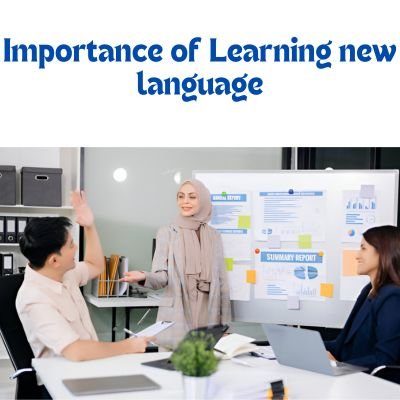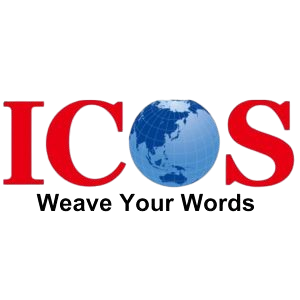Machine Translation Vs Human Translation: The Battle for Linguistic Supremacy

Machine Translation Vs Human Translation- who is the winner?
Why should I learn a new language when I have AI to do the job for me?
We know that technology is promising to bridge every gap. It’s gatecrashing into our lives without invitation, with its head held high, telling us, I can do your job- you sit back and relax.
It told us the same thing as it suddenly made its way into the translation business.
Hence, the question arises: When technology is there to translate, why should I learn a new language?
Let’s get to the answer:
Let’s imagine you’re standing on a podium, ready to give your insights on global warming to multilingual people present as the audience- You have a smartphone in hand and are ready to translate any phrase, any nuance, in mere seconds.
What do you think will happen?
Though it’s a convenient and fast option, will you be sure, that whatever was translated by an AI was exactly what you wanted to say?
Can this digital convenience, replace the richness with which you would have translated the phrases, had you been the language expert who truly understands the language.
You probably know the answer to this.
“The limits of my language mean the limits of my world.” – Ludwig Wittgenstein
Think of the last time you shared a moment with someone from a different culture. It could have been a business deal, a casual chat, or even a simple gesture of kindness.
Weren’t the words you exchanged, more than just information? They carried emotions, cultural nuances, and unspoken meanings right?
Now, what if those words had been translated by a machine? Would the connection be the same?
Sure, machines can give you the words, but they can’t grasp the soul behind them.
Today we will not just compare machine translation to human translation; we’ll understand why, in a world obsessed with speed- the depth and richness of human translation still hold irreplaceable value.
Let’s get to the point, where language, technology, and human connection intersect.
To Know about AI in Japanese Translation Click here
Table of Contents
ToggleTable of Contents
What Is Machine Translation?
Machine Translation Definition
Machine Translation is the process of translating text between languages using software.
Google Translate is one such software that interprets more than 100 billion words each day, demonstrating the increased reliance on machines to overcome language gaps
But why is machine translation so popular?
Machine translation can save up to 70% of translation costs and 50% of translation time. This information is difficult to ignore for firms dealing with tight budgets and approaching deadlines.
Furthermore, the global machine translation market is expected to reach $1.5 billion by 2026, indicating that machine translation is not a passing trend. It’s an essential component of modern corporate communication.
However, while Machine Translation is highly efficient, it is critical to recognize its limitations.
Machine translation can be up to 90% accurate for popular language pairs,, but for less common pairs, the accuracy drops dramatically, often to 50%.
This raises an important question: can businesses afford to risk such a drop in accuracy, particularly when dealing with crucial content?
Will Machine Translation Replace Human Translators?

The idea that machine translation might one day replace human translators entirely is a common fear.
Is it or is it not? Let’s take a closer look.
While machines excel at speed and processing large volumes of data, they struggle with the subtleties of human language—things like irony, humor, or the cultural context that gives words their true meaning.
For example-
A machine might translate a contract’s legal terms accurately, but can it convey the intent behind a carefully worded clause?
The truth is, while AI and machine translation are incredible tools, they are just- tools. And like any tool, they are most effective when guided by skilled human hands.
Human translators bring a depth of understanding and a sensitivity to nuance that machines simply cannot match.
What Is Human-Assisted Machine Translation?
Let’s say you’re a game developer about to launch a highly anticipated video game worldwide. Your storylines are intricate, your characters are complex, and the dialogues are packed with humor.
Translating all this for a global audience feels like trying to capture lightning in a bottle.
That’s where human-assisted machine translation is utilized to its full capacity.
Here’s how it works: machines start by translating the massive amount of text in your game, from in-game dialogues to user interfaces. They handle the bulk, ensuring quick turnaround.
But games are more than just text—they’re about immersion, tone, and cultural resonance. This is where human translators step in, taking the machine’s output and fine-tuning it to ensure that every joke lands, every reference makes sense, and every character feels authentic in their cultural context.
This approach is gaining traction in every industry, where the audience is global. It’s like programming an advanced AI to solve complex puzzles but then having a master storyteller go in and add the heart, humor, and humanity that make your game unforgettable.
Importance of Learning A New Language?

When automation and AI are taking over, it’s tempting to think that learning a new language is a thing of the past. But is language just about getting a message across; or something beyond?
Imagine you’re attending an international trade show. Booth after booth, people are discussing products, exchanging business cards, and making deals.
Then you meet a potential partner from Brazil. Instead of relying on an interpreter, you greet them with a simple “Bom dia” and watch his straight face turn into a smile.
Suddenly, you’re not just another business contact—you’re someone who cared enough to step into his world, even if just for a moment.
One modest act of respect and trust can establish the foundation of a long-lasting connection. For entrepreneurs, understanding the language of your clients—even if it’s just the basics—can give you a unique edge.
It’s the effort you take that counts.
We think algorithms and automation are superior, but business is still, at its core, about people, which is far beyond the transactional.
Hence, learning a new language is worth all the effort.
Examples of Human-Machine Translation
Here’s a fresh perspective with an example that’s more relatable.
Let’s say you’re a small business owner in the U.S., and you’ve just landed a deal to sell your products in France. You’re excited but also a bit nervous about making sure your marketing message resonates with French consumers.
You start by using machine translation to convert your promotional materials into French. The machine does a decent job, but you know that French customers are particular about language—how it’s said is almost as important as what’s said.
So, you bring in a human translator to review the content. They fine-tune the language, swap out phrases that might sound awkward in French, and make sure the tone is just right.
The result?
A marketing campaign that doesn’t just speak French—it speaks to the French.
Human-assisted machine translation gives you the best of both worlds—speed and accuracy, technology and human touch, all working together to help your business succeed in a global marketplace.
Frequently Asked Questions
Google Translate is incredibly convenient, but it has its limitations. It often fails to capture the nuances of a language, leading to awkward or even incorrect translations, especially in complex or culturally specific contexts.
AI is rapidly advancing, and its role in translation is growing. However, rather than replacing human translators, AI is becoming a valuable tool that enhances their capabilities, allowing them to work more efficiently and focus on higher-level tasks that require human judgement.
Although AI will probably advance further, it is unlikely that it will ever fully replace human translators. Language is deeply tied to culture, emotion, and context—areas where human intuition and understanding are irreplaceable.
The three main types of translators are:
- Human Translators: Professionals who translate text by understanding and interpreting meaning.
- Machine Translators: Software that translates text based on algorithms and data.
- Hybrid Translators: A combination of machine translation with human editing for accuracy and cultural relevance.
The three primary techniques for machine translation are:
- Rule-Based Translation: Uses a set of linguistic rules to translate text.
- Statistical Translation: Uses statistical models based on large amounts of bilingual text.
- Neural Machine Translation: Learns from large datasets to provide translations that are more accurate by utilizing AI and deep learning.
Signing off
In the convergence of language and tech, we see a crucial interplay between machines and humans.
Machines churn out translations at blistering speeds and the human touch breathes life into those words, turning data into dialogue and text into trust.
In global business, every word has the potential to either make or break connections. Hence, the cultural subtleties and emotional understanding humans possess aren’t merely useful—they’re essential.
Translation is more than just translating words; it also requires comprehension, empathy, and intent. That’s a connection that only a human can create by joining hands with advanced machine technologies.
There is magic when human and machine collaboration is perfected.
The real voyage of discovery consists not in seeking new landscapes, but in having new eyes
Marcel Proust

